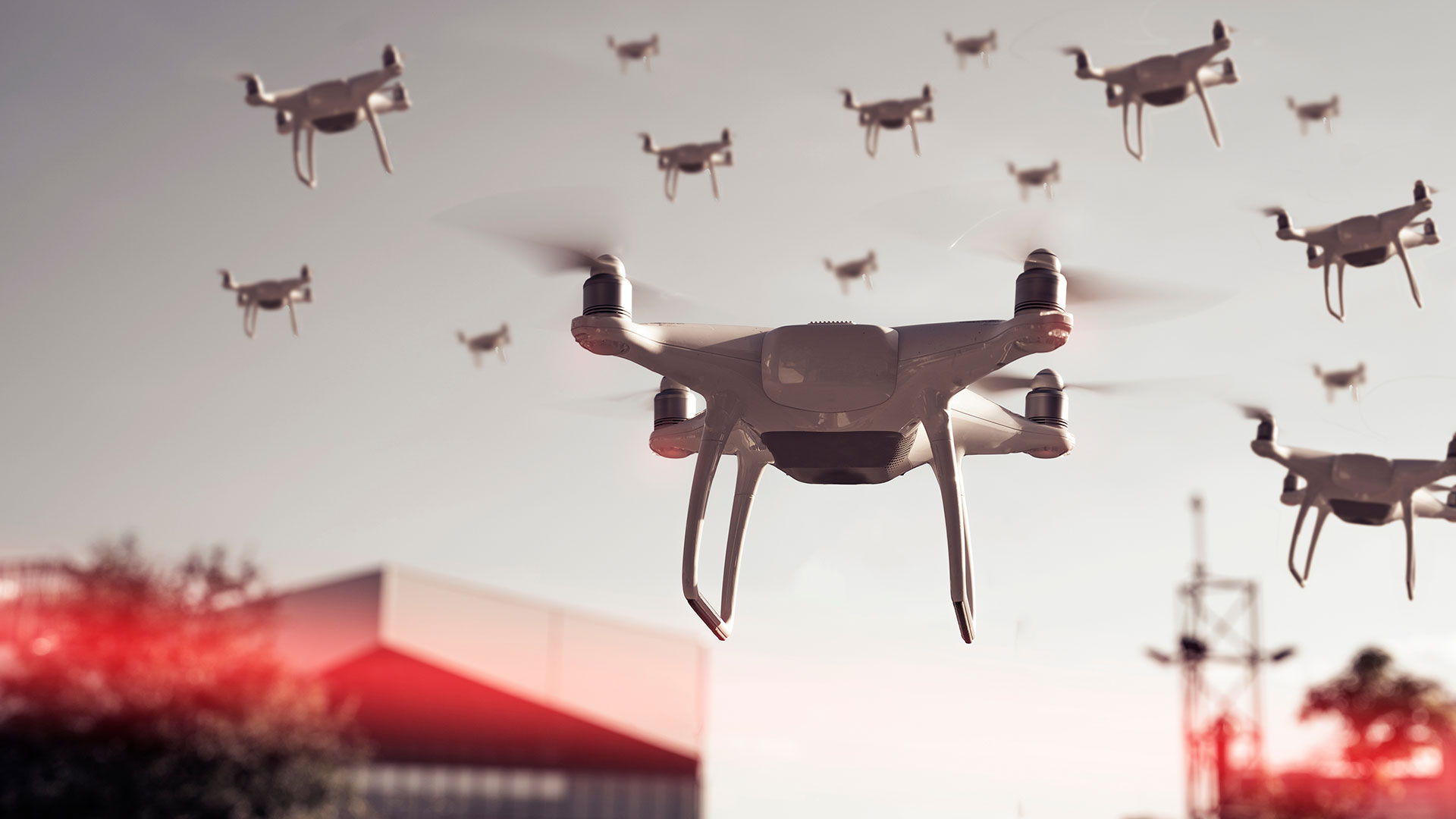10 OCTOBER 2022
Artificial intelligence must make drone swarms autonomous in order to use them as an effective tool for searches at sea. Drone swarms must also be able to respond fast in the event of floods and other natural disasters.

Researchers from SDU and AAU are currently collaborating with the Aalborg company Robotto and the Danish Emergency Management Agency to develop the autonomous drone swarms.
Robotto is already known from the Danish TV program “My idea – our mission”. Earlier this year, the company won the competition for best climate idea for the development of intelligent drones to help monitor large areas of land and fight wildfires before they get out of control.
Sees things which cannot be seen by the human eye
Together with researchers from University of Southern Denmark and Aalborg University led by Professor Anders Lyhne Christensen from SDU Biorobotics and Associate Professor, PhD Tim Merritt from the Department of Computer Science at Aalborg University, Robotto is now working on developing intelligent drones for use in search operations at sea. The drones will also be able to help rescuers searching for survivors and victims after floods and other natural disasters.
“We work with artificial intelligence and swarm drone technology. Our goal is to get many drones to cooperate so that they can coordinate a search operation over a large area with precision and autonomously. As the drones with artificial intelligence can see much more than the human eye, they are an important tool in future search and rescue efforts,” says Kenneth Richard Geipel, co-founder and CEO of Robotto.
Cheaper and more efficient
Drone swarms are both cheaper to operate and more efficient than rescue helicopters, he adds. The price for a drone is approx. DKK 100,000. In comparison, it costs DKK 16,000 per minute when a rescue helicopter takes off. “The advantage of artificial intelligence is that it can identify patterns and analyze images much more effectively than humans can. Therefore, a drone can search a very large area and look for people and objects in the sea that are impossible for humans to see.”
Must respond in the case of natural disasters
In the long term, the goal is to establish drone airports in strategic locations, so that the drones can quickly move out, for example after oil spills at sea, during floods and other natural disasters, and within very short time help the emergency services with the situation. “Even if we stopped all CO2 emissions tomorrow we will still experience natural disasters like the floods in Pakistan and Florida. Therefore, it makes good sense to have mobile containers with small drones ready, so that they can respond fast in operations in high-risk areas,” says Kenneth Richard Geipel.
In the future, the drones will be able to work completely autonomously and be able to manage missions themselves, he adds. “Drones can already make decisions themselves depending on the situation, and when we get several drones to communicate, it will only require one person on the ground to press start. The drones will take care of the rest together and they figure on their own how to search an area in the best possible way.”